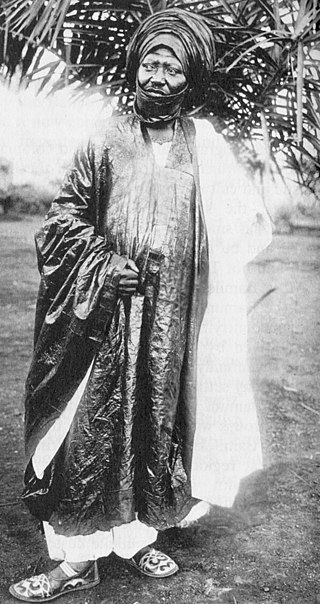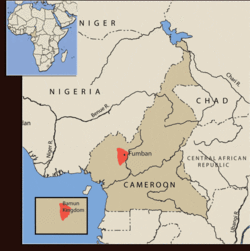
An abugida, sometimes known as alphasyllabary, neosyllabary or pseudo-alphabet, is a segmental writing system in which consonant–vowel sequences are written as units; each unit is based on a consonant letter, and vowel notation is secondary, like a diacritical mark. This contrasts with a full alphabet, in which vowels have status equal to consonants, and with an abjad, in which vowel marking is absent, partial, or optional – in less formal contexts, all three types of script may be termed "alphabets". The terms also contrast them with a syllabary, in which a single symbol denotes the combination of one consonant and one vowel.

A diacritic is a glyph added to a letter or to a basic glyph. The term derives from the Ancient Greek διακριτικός, from διακρίνω. The word diacritic is a noun, though it is sometimes used in an attributive sense, whereas diacritical is only an adjective. Some diacritics, such as the acute ⟨á⟩, grave ⟨à⟩, and circumflex ⟨â⟩, are often called accents. Diacritics may appear above or below a letter or in some other position such as within the letter or between two letters.
In the linguistic study of written languages, a syllabary is a set of written symbols that represent the syllables or moras which make up words.
The Burmese alphabet is an abugida used for writing Burmese. It is ultimately adapted from a Brahmic script, either the Kadamba or Pallava alphabet of South India. The Burmese alphabet is also used for the liturgical languages of Pali and Sanskrit. In recent decades, other, related alphabets, such as Shan and modern Mon, have been restructured according to the standard of the Burmese alphabet

Telugu script, an abugida from the Brahmic family of scripts, is used to write the Telugu language, a Dravidian language spoken in the Indian states of Andhra Pradesh and Telangana as well as several other neighbouring states. It is one of the official scripts of the Indian Republic. The Telugu script is also widely used for writing Sanskrit texts and to some extent the Gondi language. It gained prominence during the Eastern Chalukyas also known as Vengi Chalukya era. It shares extensive similarities with the Kannada script, as both of them evolved from the Bhattiprolu and Kadamba scripts of the Brahmi family. In 2008, the Telugu language was given the status of a Classical Language of India, in recognition of its rich history and heritage.

The Cherokee syllabary is a syllabary invented by Sequoyah in the late 1810s and early 1820s to write the Cherokee language. His creation of the syllabary is particularly noteworthy as he was illiterate until its creation. He first experimented with logograms, but his system later developed into the syllabary. In his system, each symbol represents a syllable rather than a single phoneme; the 85 characters provide a suitable method for writing Cherokee. Although some symbols resemble Latin, Greek, Cyrillic, and Glagolitic letters, they are not used to represent the same sounds.

Canadian syllabic writing, or simply syllabics, is a family of writing systems used in a number of Indigenous Canadian languages of the Algonquian, Inuit, and (formerly) Athabaskan language families. These languages had no formal writing system previously. They are valued for their distinctiveness from the Latin script and for the ease with which literacy can be achieved; indeed, by the late 19th century the Cree had achieved what may have been one of the highest rates of literacy in the world.

The Yi scripts are two scripts used to write the Yi languages; Classical Yi, and the later Yi syllabary. The script is historically known in Chinese as Cuan Wen or Wei Shu and various other names (夷字、倮語、倮倮文、畢摩文), among them "tadpole writing" (蝌蚪文).

Japanese Braille is the braille script of the Japanese language. It is based on the original braille script, though the connection is tenuous. In Japanese it is known as tenji (点字), literally "dot characters". It transcribes Japanese more or less as it would be written in the hiragana or katakana syllabaries, without any provision for writing kanji.

Mandombe or Mandombé is a script proposed in 1978 in Mbanza-Ngungu in the Bas-Congo province of the Democratic Republic of the Congo by Wabeladio Payi, who related that it was revealed to him in a dream by Simon Kimbangu, the prophet of the Kimbanguist Church. Mandombe is based on the sacred shapes and , and intended for writing African languages such as Kikongo, as well as the four national languages of the Congo, Kikongo ya leta, Lingala, Tshiluba and Swahili, though it does not have enough vowels to write Lingala fully. It is taught in Kimbanguist church schools in Angola, the Republic of the Congo, and the Democratic Republic of the Congo. It is also promoted by the Kimbanguist Centre de l’Écriture Négro-Africaine (CENA). The Mandombe Academy at CENA is currently working on transcribing other African languages in the script. It has been classified as the third most viable indigenous script of recent indigenous west African scripts, behind only the Vai syllabary and the N'Ko alphabet.
The Vai syllabary is a syllabic writing system devised for the Vai language by Momolu Duwalu Bukele of Jondu, in what is now Grand Cape Mount County, Liberia. Bukele is regarded within the Vai community, as well as by most scholars, as the syllabary's inventor and chief promoter when it was first documented in the 1830s. It is one of the two most successful indigenous scripts in West Africa in terms of the number of current users and the availability of literature written in the script, the other being N'Ko.

Carrier or Déné syllabics is a script created by Adrien-Gabriel Morice for the Carrier language. It was inspired by Cree syllabics and is one of the writing systems in the Canadian Aboriginal syllabics Unicode range.
Standard Sundanese script is a writing system which is used by the Sundanese people. It is built based on Old Sundanese script which was used by the ancient Sundanese from the 14th to the 18th centuries.

A semi-syllabary is a writing system that behaves partly as an alphabet and partly as a syllabary. The main group of semi-syllabic writing are the Paleohispanic scripts of ancient Spain, a group of semi-syllabaries that transform redundant plosive consonants of the Phoenician alphabet into syllabograms.

Sultan Ibrahim Njoyac. 1860 – c. 1933 in Yaoundé, was seventeenth in a long dynasty of kings that ruled over Bamum and its people in western Cameroon dating back to the fourteenth century, and Neographer having invented the Bamum syllabary. He succeeded his father Nsangu, and ruled from 1886 or 1887 until his death in 1933, when he was succeeded by his son, Seidou Njimoluh Njoya. He ruled from the ancient walled city of Fumban.
The Woleai or Caroline Island script, thought to have been a syllabary, was a partially Latin-based script indigenous to Woleai Atoll and nearby islands of Micronesia and used to write the Woleaian language until the mid-20th century. At the time the script was first noticed by Europeans, this part of Micronesia was known as the Caroline Islands, hence the name Caroline Island script.

Pahawh Hmong is an indigenous semi-syllabic script, invented in 1959 by Shong Lue Yang, to write two Hmong languages, Hmong Daw (Hmoob Dawb White Miao) and Hmong Njua AKA Hmong Leng (Moob Leeg Green Miao).

A writing system is a method of visually representing verbal communication, based on a script and a set of rules regulating its use.
Inuktitut Braille is a proposed braille alphabet of the Inuktitut language based on Inuktitut syllabics. Unlike syllabics, it is a true alphabet, with separate letters for consonants and vowels, though vowels are written before the consonants they follow in speech. It was published in 2012 by Tamara Kearney, Manager of Braille Research and Development at the Commonwealth Braille and Talking Book Cooperative. The book ᐃᓕᐊᕐᔪᒃ ᓇᓄᕐᓗ The Orphan and the Polar Bear was the first work transliterated into Inuktitut Braille.















